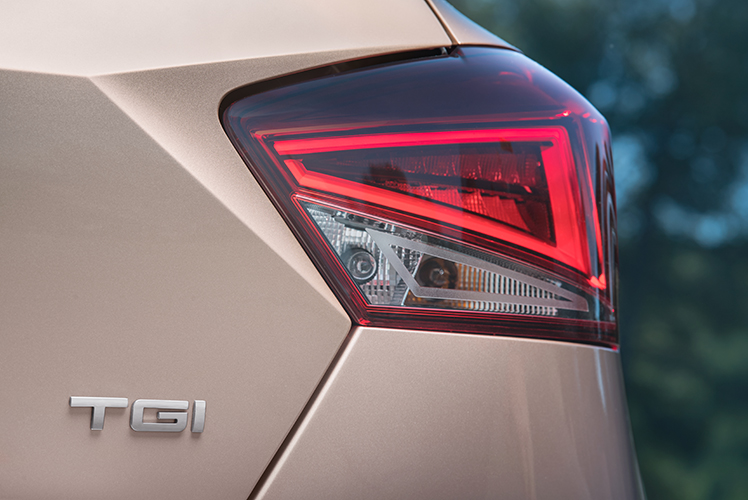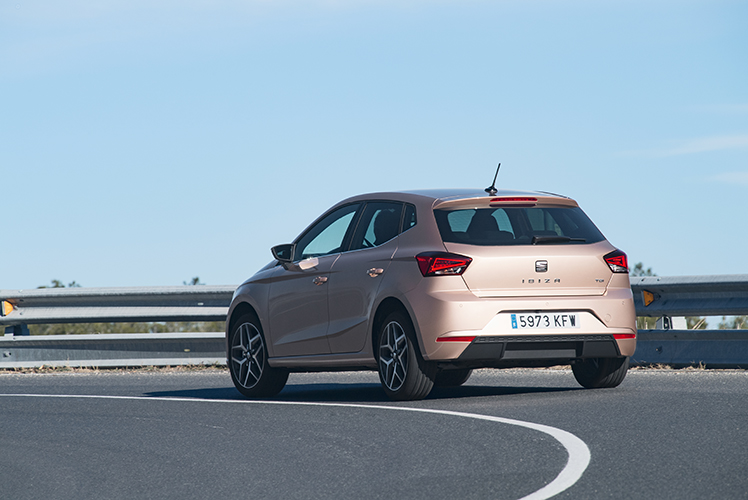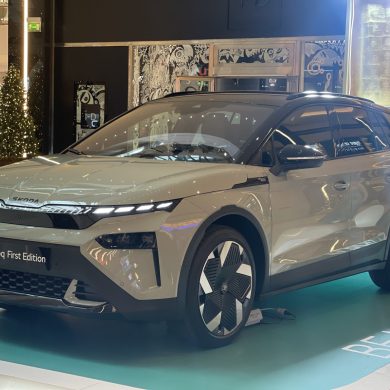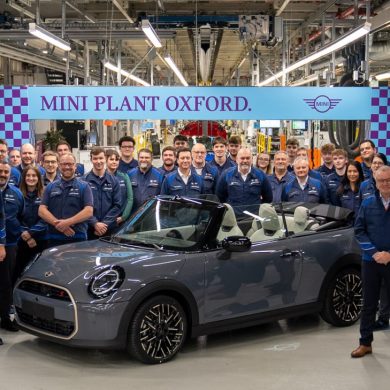The new SEAT Ibiza in history is now also the most
environmentally friendly, with the integration of Compressed Natural technology
Gas in the 5th generation of the Spanish carmaker's best-selling model.
The new Ibiza TGI is more economical to drive and more environmentally friendly
of diesel or petrol powered models, as well as many
non-plug-in hybrids.

The new model, the third to use CNG after the Leon
and the Mii, is built in Martorell using the MQB A0 platform. Η
SEAT enhances CNG technology as it contributes significantly to the reduction of
CO2 emissions: emits 85% less nitrogen oxide emissions in
compared to diesel engines, while reducing emissions CO2 by 25%, thus contributing to the improvement
air quality in cities.

Cars fuelled with compressed natural gas
are a viable alternative to fill the gap between the
"traditional" and the electrical
engines, and represent the strategic basis for increasing the
environmental friendliness while at the same time being an attractive commercial
proposal for customers.

The operating costs per kilometre are indeed
particularly low, because natural gas is more efficient than other
fuel as it requires a smaller amount of fuel to produce the same
energy and in addition the filling costs only 13 euros.
The new SEAT Ibiza 1.0 TGI delivers 90 bhp and an average output of
a certified fuel consumption of 3.3 kg/100 km in CNG mode, which
is equivalent to an investment of €3.22 for driving 100 km. The total
distance that the new Ibiza TGI can cover is 1,194 km, using
13 kg of CNG and 40 litres of petrol in the two fuel tanks.
New Ibiza TGI
The new SEAT Ibiza is equipped with a three-cylinder engine
12-valve 1.0 TGI and five-speed manual transmission. It offers maximum
90 hp between 4,500 and 5,800 rpm with a maximum torque of 160 Nm between 4,500 and 5,800 rpm
1,900 and 3,500 r.p.m. In terms of performance levels, it reaches a top speed of
of 180 km/h, accelerates from 0 to 100 km/h in 12.1 seconds and the
certified data include an average fuel consumption of 5 l/100 km at
petrol mode and 4.9 m3/100 km (3.3 kg/100 km), emitting only 88 g/km
CO2 in CNG mode.
The TGI version of the 5th generation Ibiza is equipped with two
fuel tanks, one for 13 kg of CNG and the other with a capacity of 40 litres
for petrol, which is identical to all other petrol versions
Ibiza.
In addition to the equipment available in the petrol versions,
the new Ibiza TGI is also equipped with the necessary equipment to drive with
natural gas, such as CNG fuel tank, gas filling plug next to
in the gas cap, several temperature and gas pressure sensors as well as
pressure regulator and gas distribution system, among others. It also has
reinforced pistons and valves for increased durability and better circulation
of the gas in the combustion chamber. In addition, the turbocharger in the Ibiza TGI
weighs less to act directly and increase engine response.
Finally, it has specific fuel level indicators for each tank, which
which are located on the instrument panel.
The SEAT Ibiza TGI has always used natural gas as the
main fuel, unless the temperature of the antifreeze falls below
10°C, wherein the engine starts using gasoline and starts a process
heating of the gas injection valves, before the automatic activation of the
CNG circuit. With this exception, the Ibiza TGI only runs on petrol.
as a fuel source when the CNG tank is empty. This change is made automatically
without the driver being aware of any difference in vehicle performance
or in its handling. An indicator lights up on the instrument panel to inform the driver that the
driver that he drives on gas. So the Ibiza TGI combines two vehicles in one
one, allowing the possibility of more sustainable, economical driving with
compressed natural gas or petrol.
In addition, the screen displays information about the
gas quality, consumption and remaining distance
driving with the two fuels, as well as any possible malfunctions of the
CNG system.
Although the gas tank is located under the floor
luggage space, the new Ibiza TGI continues to offer increased
storage space, with a total capacity of 262 litres.
SEAT continues its commitment to the environment
promoting compressed natural gas (CNG) and petrol technology in the
long list of advantages it provides to its customers, both in terms of
cost savings and in terms of ecological awareness. The
the most important cost benefits are:
- CNG is much cheaper than other types
fuel. Because of its low cost per kilogram, and because it is not
oil derivative, is not affected by unexpected fluctuations in prices
of oil. In addition, CNG-fuelled cars have low fuel consumption.
maintenance costs as they are equipped with a single engine that operates
with both types of fuel
- In addition, compressed natural gas is more efficient
fuel, as it requires less to produce the same amount of energy.
The energy produced from 1 kg of CNG is roughly equivalent to 2 litres of
LPG, 1.5 litres of diesel or 1.3 litres of petrol.
SEAT CNG range
The Ibiza CNG is not the only ECO alternative to the
SEAT. The Leon 1.4 TGI 110HP also has a CNG engine and emits between 99
and 101 g/km CO2 with an average consumption of 5.6 l/100 km
In addition, the three- and five-door Mii 1.0 68HP with manual
five-speed gearbox, emits only 83 g/km of CO2 and consumes an average of
4.5 l/100 km. This car is small on the outside but big on the inside.
interior and is equipped with all the necessary elements of comfort and
safety for driving pleasure in the city.
These three models, together with the SEAT Arona TGI, which the
its launch scheduled for the end of the year, will establish the
SEAT as the company with the most comprehensive CNG range.
The SEAT CNG sales strategy is paying off. In 2017, the
CNG vehicle sales in Europe increased by 18%, from around 3,400 to over
than 4,000, thanks basically to the Spanish market, where SEAT has a market share of
above 83%. Italy is SEAT's first CNG car market, with almost
2,000 cars.
The new Ibiza 1.0 TGI 90hp is already on sale
in our country with a suggested retail price of 15.300€ for the fully equipped
Style edition.






